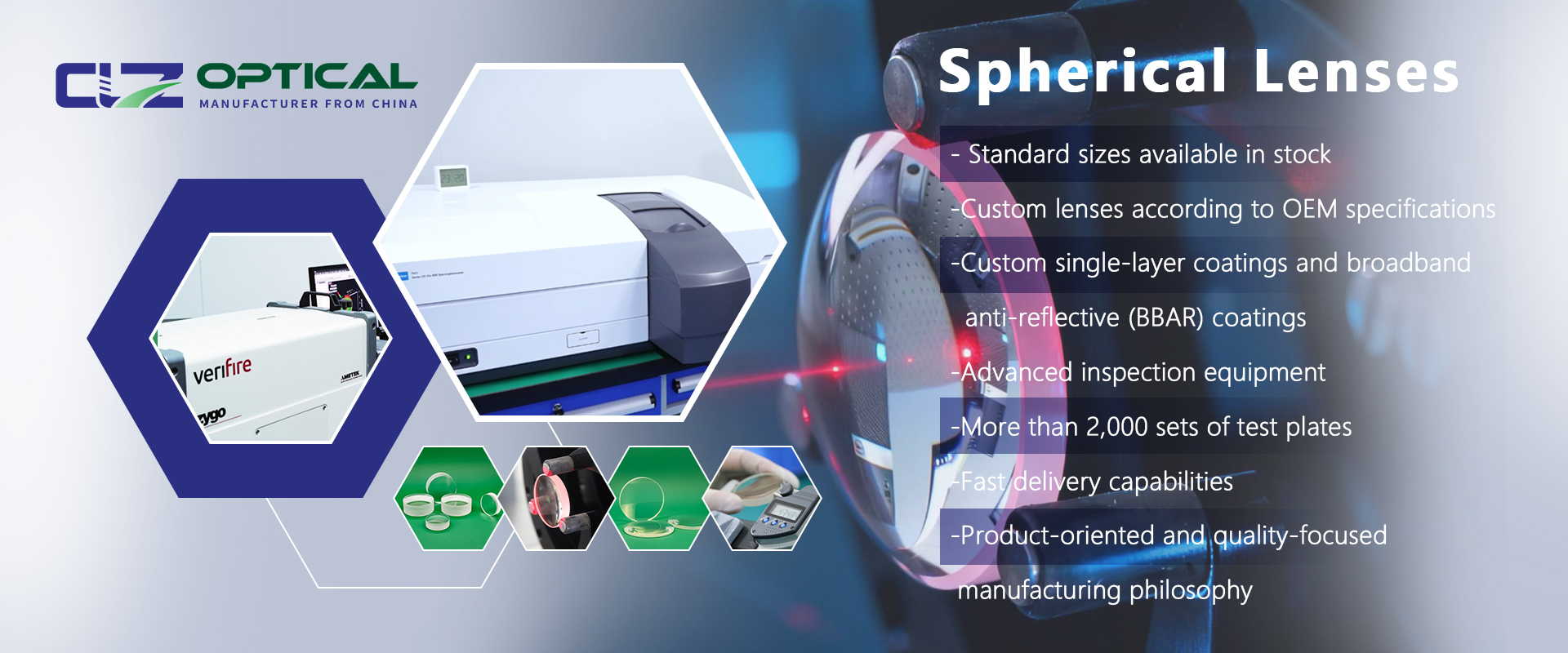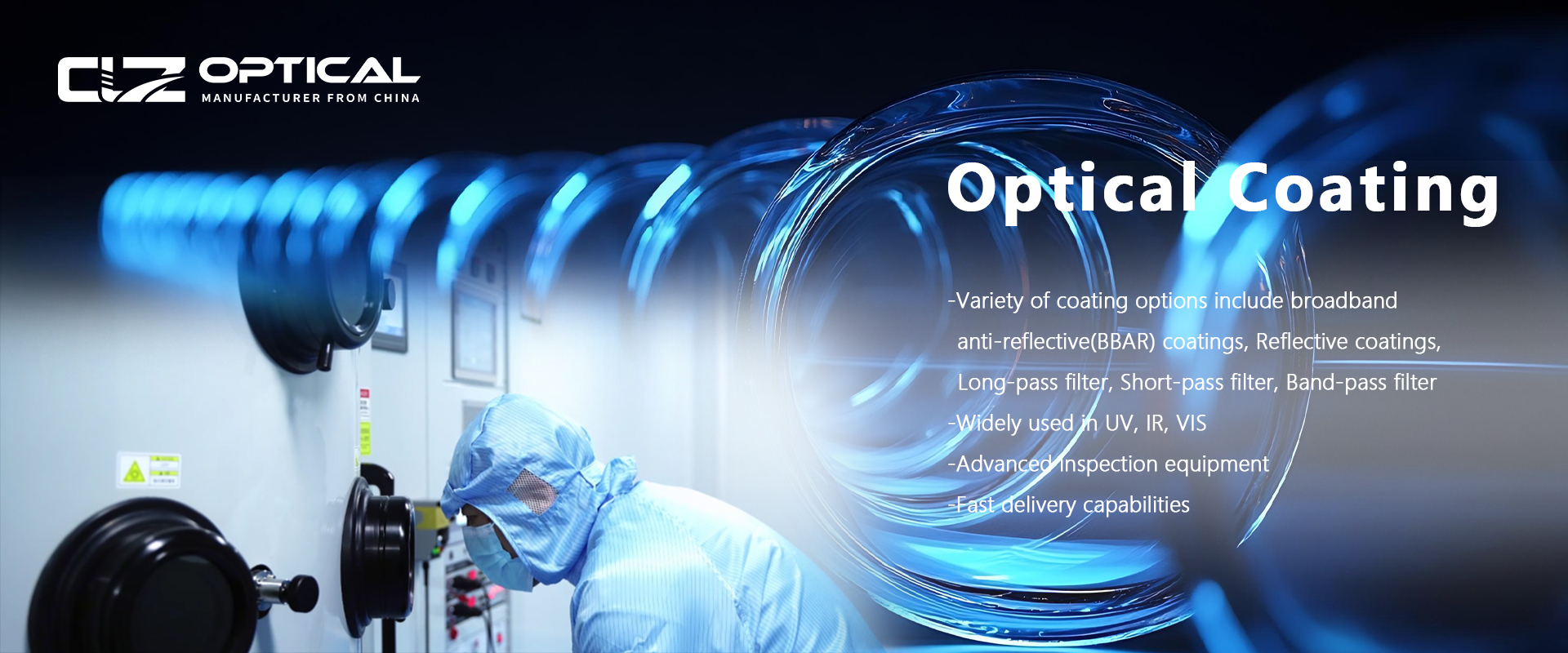Application of Optical Components to the Environmental Science and Meteorology
Jul. 23, 2025
CLZ Optical Co., Ltd. was founded in 2012 with a commitment to the processing and manufacturing of precision optical components. Our products are used in a wide variety of fields including optical imaging systems, optical testing, medical instruments, lasers Systems, Environmental Science & Meteorology, Instrument, Underwater Optics and more. With excellent quality and exquisite craftsmanship, our products have won the widespread praise of our customers, both foreign and domestic.
As an enterprise focusing on the field of precision optics, CLZ Optical Co., Ltd. adheres to our core tenet of “Precision in production, specialty in quality”. To ensure each product can meet the specifications of our customer’s drawings and needs, we strictly follow ISO9001 quality certification system standards. Additionally, we employ a wide array of metrological instruments including ZYGO interferometer, Agilent Cary 5000 Spectrophotometer, various instruments for measuring transmission, reflection, centration, focal length, and any other measurements our customers may need.
As environmental pollution becomes increasingly serious and the impact of climate change intensifies, accurate environmental monitoring and weather forecasting have become particularly important. In this context, optical components have been widely used in the fields of environmental monitoring and meteorology due to their unique advantages. Optical components can achieve non-contact, real-time and highly sensitive measurement of environmental parameters, providing strong technical support for environmental protection and meteorological research.
Environmental Monitoring
In the field of environmental monitoring, optical components are widely used. Various optical components are used to achieve certain performance through the materials and coatings of various optical components. In various instruments, physical phenomena such as light absorption, scattering, fluorescence, and interference are used to accurately measure environmental parameters such as atmosphere, water quality, and soil. The following are several key applications of optical components in the field of environmental monitoring:
Spectral analysis instruments
(1) Spectrometer: A prism, grating or interferometer is used to break down composite light into monochromatic light and analyze the composition of a substance by detecting the intensity of light at different wavelengths.Key Optical Components:
- Prism
A prism is a flat polyhedron made of transparent material (such as glass). Prisms can be divided into several types according to their properties and uses. For example, in spectroscopic instruments, prisms, gratings or interferometers are used to decompose composite light into monochromatic light, that is, to decompose composite light into dispersion prisms, and analyze the composition of materials by detecting the intensity of light of different wavelengths. It can be applied in:
Atmospheric monitoring: UV-visible spectrometers (such as DOAS systems) are used to measure pollutants such as SO₂, NO₂, and O₃;
Water quality monitoring: Infrared spectrometers detect organic pollutants in water (such as COD and BOD);
Soil monitoring: Near-infrared (NIR) spectroscopy analyzes soil organic matter content.
(2) Chlorophyll fluorometer: Chlorophyll fluorometers usually use a light source with a specific wavelength band (e.g., 460-470nm blue light) to excite chlorophyll fluorescence, and filters screen light in this band to ensure effective excitation of chlorophyll a's fluorescence properties (emission band 650-700nm). The key optical components:
- Optical Filters
Optical Filter is an optical element that can selectively transmit or block specific wavelengths of light, which is widely used in the field of environmental monitoring. Its core function is to improve the signal-to-noise ratio and specificity of the detection system through wavelength selection, so as to realize accurate measurement of pollutants and meteorological parameters. In air pollution monitoring, filters are used to separate the UV-visible band (e.g., 300-600 nm) and match the characteristic absorption peaks of gases such as SO₂, NO₂, and O₃.
In water quality monitoring, filters are used to eliminate interfering signals and accurately detect pollutant concentrations mainly by selectively transmitting light at specific wavelengths, and the core functions include:
1. Eliminate background light interference
When detecting heavy metal ions (such as copper, iron), organic matter (such as COD, ammonia nitrogen) or suspended particles in water quality, the filter can filter out light of non-target wavelengths, improve the signal-to-noise ratio, and ensure measurement accuracy. For example, iron ions have a characteristic absorption peak at 510nm, and narrow-band filters can accurately filter the light in this band for quantitative analysis;
In water quality monitoring scenarios, filters can be combined with algorithms to filter out external light interference (such as turbid water or strong light environment) to ensure measurement stability. For example, the chlorophyll automatic monitor eliminates the influence of stray light through filtering algorithms to improve measurement accuracy; the chlorophyll fluorescence meter captures the characteristic absorption peak of chlorophyll through a combination of filters (such as the red band and the red edge band), and calculates parameters such as Fv/Fm to evaluate the health status of plants.
2. Improve detection sensitivity
Narrowband or bandpass filters can be used to separate specific UV/visible light bands (such as 254nm to detect organic matter), combined with chemical color development reactions to achieve ppb-level sensitive detection. Infrared filters (such as 860nm) assess water turbidity through scattered light intensity.
3. Ensure data accuracy
During the detection process, interference of other substances (such as suspended matter, color interference) on the target signal is eliminated, for example, by using filters to screen out the characteristic absorption wavelength after reaction with the color developer to ensure data reliability.
Meteorology
Optical components provide a variety of innovative solutions for measuring meteorological parameters. LiDAR measures atmospheric wind fields through the Doppler effect, providing important data for wind energy assessment and aviation safety. Pyranometers can accurately calculate atmospheric aerosol optical thickness and water vapor content by measuring the attenuation of solar radiation. Ultraviolet radiation meters can measure solar ultraviolet radiation.
In the field of meteorological remote sensing, hyperspectral imagers can obtain high-resolution spectral information of the ground-atmosphere system for remote sensing inversion of cloud characteristics, surface temperature and other parameters. Polarized LiDAR is used to study cloud microphysical properties, providing an important basis for precipitation forecasting. Infrared radiometers invert surface temperature and emissivity by measuring radiation in the atmospheric window area.
(1) Laser wind radar: It is a device that detects wind speed, wind direction and three-dimensional wind field information by transmitting laser pulses and measuring the frequency change of backscattered echoes of atmospheric aerosols (e.g. dust, clouds, etc.). It is mainly used to measure atmospheric wind speed, wind direction and wind shear parameters, and is suitable for airport security, wind energy assessment, meteorological research and other fields. The key optical components:
-Optical Windows
Optical Window is a flat optical element used to protect the internal components of the optical system while allowing light of a specific wavelength to pass through. In meteorological observation and research, it can be used in LiDAR systems to protect the internal laser transmitter/receiver while minimizing light energy loss. As the core component of meteorological LiDAR, it adopts a 1550nm band design, is eye-safe and has excellent rain and fog penetration, with a transmittance of >99%. It also has anti-wear and hydrophobic coating properties to ensure laser energy utilization and detection accuracy.
(2) High temperature pyranometer: The pyranometer is an instrument used to measure the total solar radiation received on a horizontal plane, including direct radiation and scattered radiation. It is widely used in meteorology, solar energy research and other fields. -The optical dome (usually hemispherical or flat-top design) is the key optical component:
Generally made of fused quartz or optical glass, it is used to measure the intensity of solar radiation. It is windproof and rainproof, meets international standards, and is suitable for the 0.3-3μm band. The surface coating can resist mechanical damage and environmental erosion. The main functions include:
1. Protect the sensor: prevent environmental factors such as dust, rain, and hail from damaging the internal thermopile or photodetector.
2. Optical control: optimize the solar spectrum transmittance through material selection and coating technology to reduce stray light interference.
3. Thermal management: maintain the internal temperature stability of the instrument in high temperature environments (such as deserts and equatorial regions).
(3) ultraviolet radiation meter: It is mainly used to monitor solar ultraviolet radiation and its effects on the atmosphere, ecosystems and human health, providing important data support for weather forecasting and climate change research.
The measurement principle is to use photoelectric sensing devices as sensors, improve the directional characteristics through cosine modifiers, and convert voltage signals into UV radiation values. Different wavelength bands (e.g. UVA, UVB) need to be distinguished using specific filters. Among them, the Optical Dome is one of the core components of the UV radiation meter, and its performance directly affects the accuracy and long-term stability of UV measurement. The optical dome not only needs to protect the sensitive components inside, but also must ensure efficient transmission of UV wavelengths while suppressing interference from other wavelengths.
The primary function of an optical dome is to achieve selective transmission of ultraviolet light. The ideal dome material should maintain a transmittance of more than 50% in the UV-A (315-400nm) and UV-B (280-315nm) bands, while effectively cutting off visible light and infrared bands. This feature is achieved in the following ways:
1. Select ultraviolet high-transmittance materials (such as fused silica)
2. Coating multi-layer optical films (anti-reflection films and cut-off filter films)
In addition, UV radiation meters work outdoors all year round, and the optical ball cover must provide reliable physical and chemical protection: prevent mechanical damage such as dust, rain, and hail, resist chemical corrosion such as salt spray and acid rain, and reduce the aging effect caused by long-term exposure to ultraviolet rays.
As a professional instrument for measuring the intensity of solar ultraviolet radiation, the optical filter is also one of its core optical components. The filter selectively transmits the light of the target band while blocking visible light, infrared light and other stray light to ensure the accuracy and specificity of the measured data.
Traditional radiometers are susceptible to out-of-band leakage interference in the ultraviolet band. The use of solar-blind ultraviolet filters can effectively suppress background radiation interference and improve the measurement signal-to-noise ratio. For example, calibrating the filter radiometer through the spectral radiation power responsivity measurement device can achieve high-precision standard transmission and ensure the reliability of ultraviolet radiation measurement.
Adaptation to specific wavelength requirements
Select different band filters according to your application:
- Solar-blind UV filters: Dedicated to 232-400nm wavelength band, through the metal-dielectric multilayer structure to achieve high transmission and bypass band suppression.
- Narrow band filters: such as BP324 bandpass filter, the center wavelength of 710nm, with infrared blocking filters, you can observe the effect of sunscreen on the absorption of ultraviolet light. UV radiation meters with narrow band filters can monitor solar radiation in the wavelength band below 280 nm for dynamic analysis of the ozone hole. These filters need to have very low background noise (<10-⁵ transmittance outside the cutoff band).
As a professional optical component manufacturer, CLZ Optical Co., Ltd. is committed to providing high-quality core optical component solutions for environmental monitoring systems and meteorology. Including optical domes, filters, windows, prisms and other precision optical components, which are widely used in various types of UV radiation meters, pyranometers and other meteorological monitoring equipment.
Our technical advantages:
√ Precision manufacturing capabilities
√ CNC grinding equipment and coating equipment
√ Optical inspection equipment
√ Class 1000 cleanliness production environment
√ ISO9001 quality management certification
√ Provide test reports




















